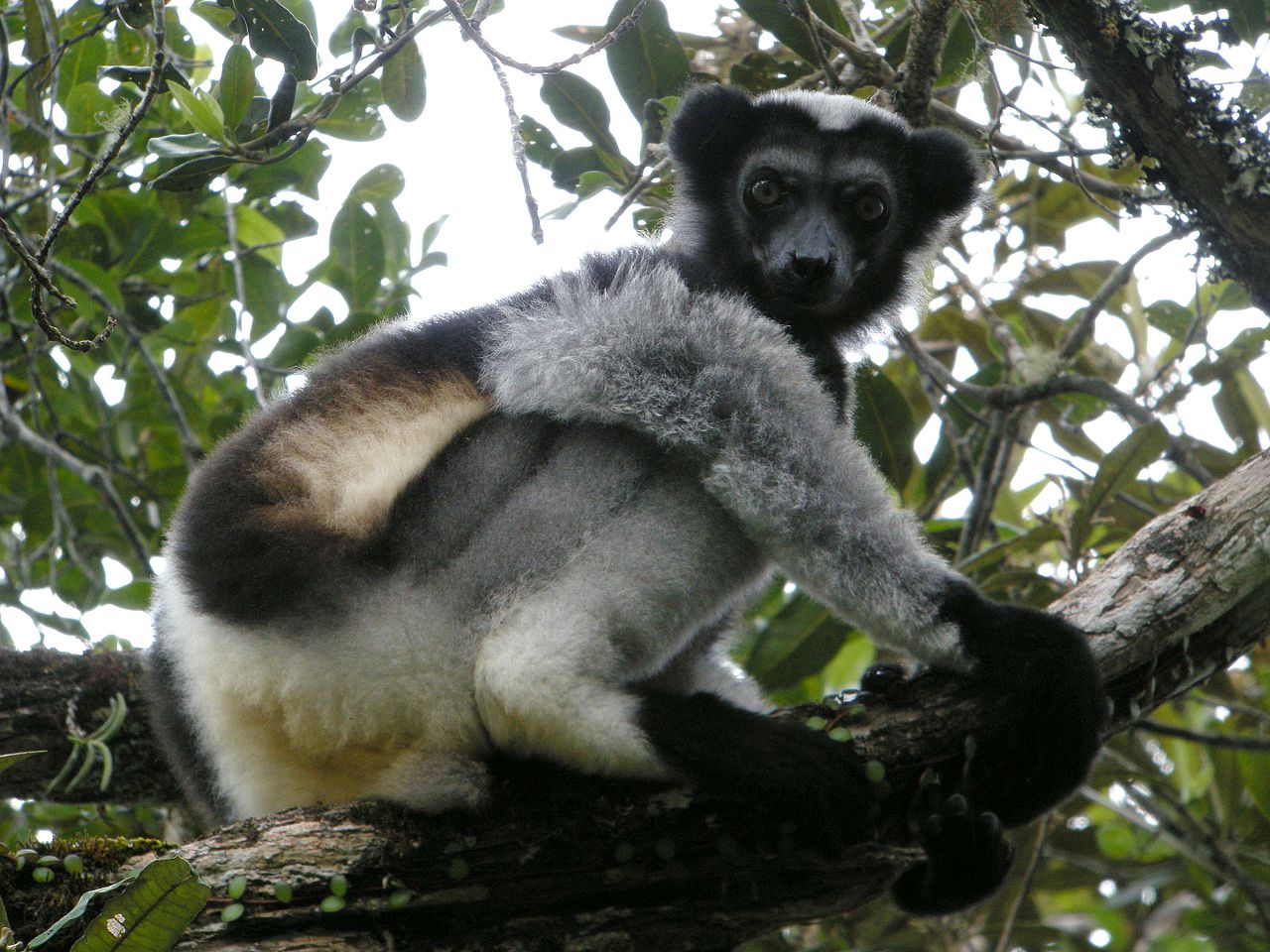Yet like all other lemurs, indris are critically endangered and are losing out to habitat loss and poaching.
Indri lemurs are winsome, herbivorous creatures that make their way through the canopy of forests on their home in Madagascar in small family groups. Alone of all lemurs, they emit loud, high-pitched sounds in calling out to one another, which has earned them the monker “the singing lemurs.”
The arboreal mammals’ melodic sequences can last up to three minutes and “resonate with traits of rhythm, duets, and harmonized choruses, an ability that only one other primate has mastered: humans,” explains Friends of the Earth International, a conservationist group based in Amsterdam in the Netherlands.
Yet like all other lemur species on the island, indri lemurs are critically endangered: they are losing out to habitat loss and other environmental stresses in their home in the Dragon Tree Rainforest of Maromizaha, a protected area. Some 200 indris, called “Babakoto” by the locals, reside in this primary forest with another 1,000 or so living in surrounding forests, according to conservationists.
“In the heart of the forests of Madagascar lives the indri, one of the largest living lemurs, famous for its singing and roaring that it uses to communicate. Unfortunately, this fascinating animal is one of the most threatened lemurs in the world, facing the risk of extinction due to the ongoing destruction of its habitat,” Friends of the Earth says.
“[T]he greatest threat pushing the indri towards extinction is the disappearance of its natural habitat onset by deforestation. The degradation of the Maromizaha forest has mainly been caused by the practice of slash-and-burn agriculture to convert the forest into agricultural land, selective logging, and mining,” the conservationist group says.
Another threat to the animals comes from local Malagasy people who no longer abide by a traditional taboo that bans the killing of the lemurs.
Friends of the Earth, in collaboration with teams of foreign and local scientists, is seeking to save the animals from further harm by keeping a dozen groups of indris under constant observation.
“Four local guides are in charge of studying their behavior and movements. Monitoring is carried out by both focal observations and by using special acoustic recorders placed in strategic locations, which are moved every three weeks,” the nonprofit explains.
Also underway is a habitat restoration project by means of several bamboo and other native plant nurseries with the aim of ensuring that the indris will continue to have amply roaming grounds in their native forests. At the same time, educational projects for local people seek to engage them in conservation project while community projects are aimed at raising their standards of living.
Thanks to such initiatives, there is hope that Madagascar’s famed singing lemurs will be able to carry on singing in local forests for generations to come.
This story first appeared on Sustainability Times
© 2022 Sustainability Times.
This article is licensed under a Creative Commons Attribution-ShareAlike 4.0 SA International License.












